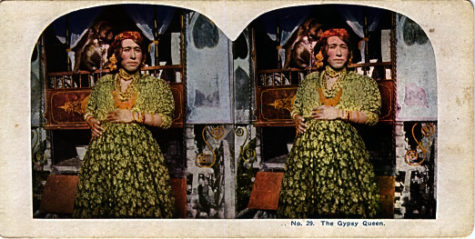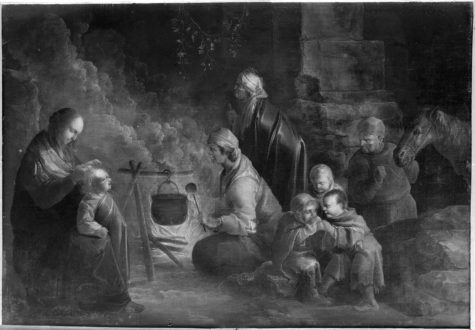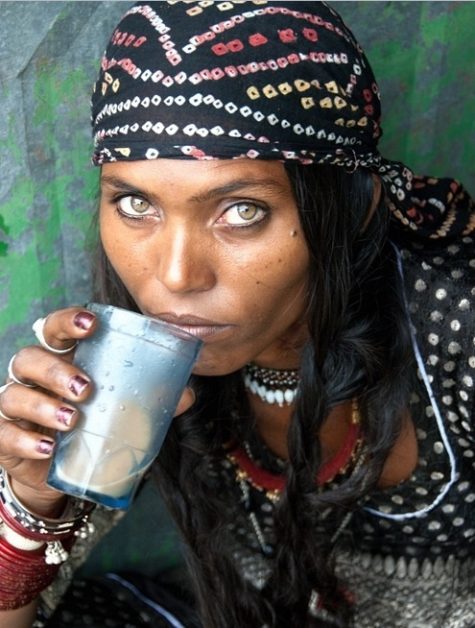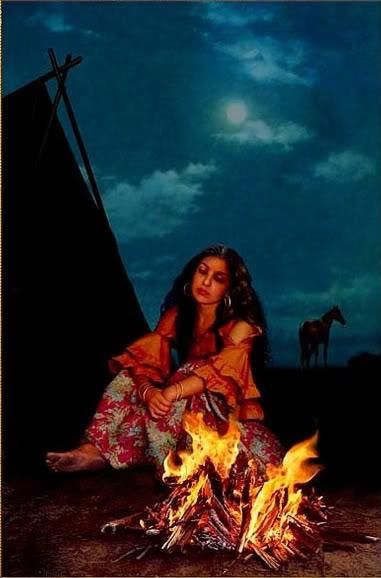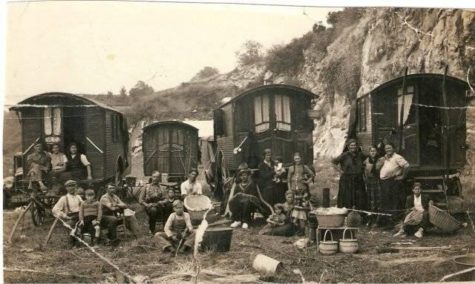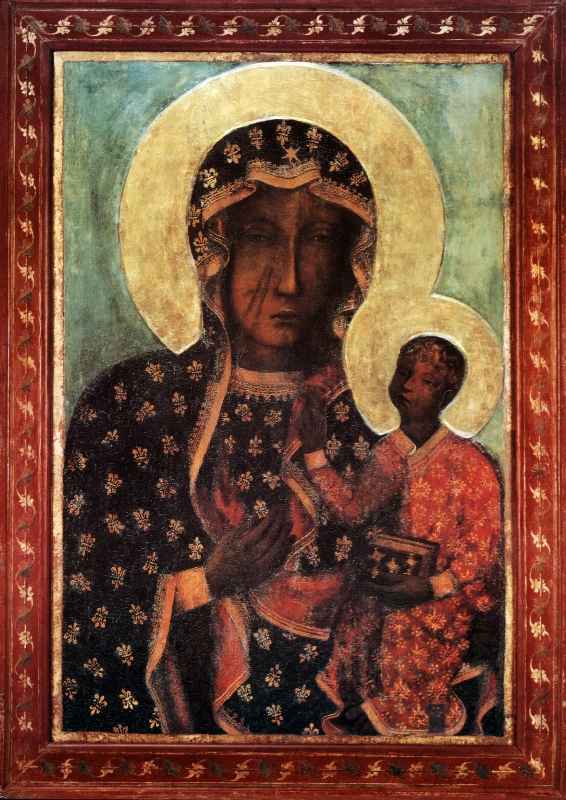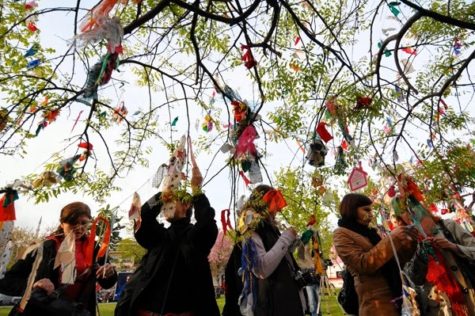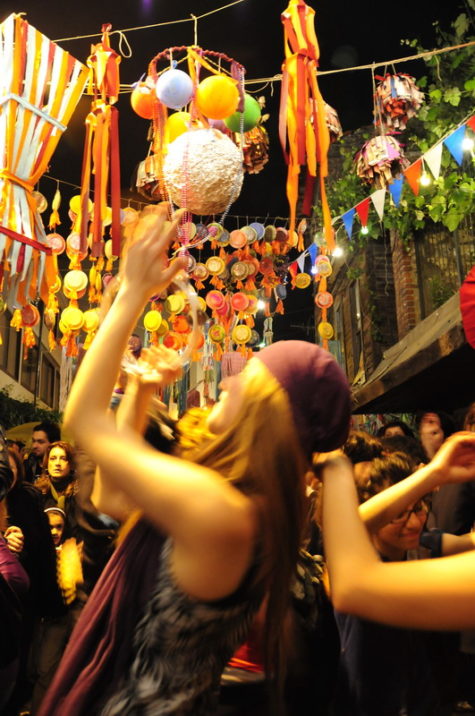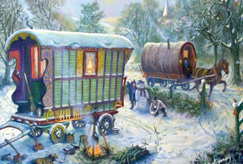Yearly Archives: 2017
Romany or Gypsy Caravans
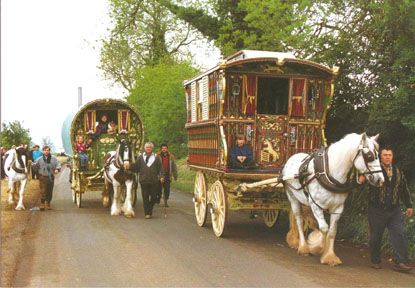
The sight of a Vardo or Romany caravan (often known to the non-travelling population as a ‘gypsy caravan’) is exciting for its rarity and conjures up an unhurried, picturesque pre-industrial lifestyle: images of Wind in the Willows, of a bow-topped roof with extravagantly carved and painted woodwork proceeding slowly behind a large and placid carthorse along narrow hedged lanes.
Referred to by travellers and gypsies as a ‘vardo’ or ‘wagon’, the horse-drawn caravan has been in use in the British Isles since the mid-nineteenth century. Initially made by the travellers themselves, the wagons began to be built by dedicated craftsmen around 1880, when the best examples began to be developed and their distinctive characteristics emerged. Fred Hill, Bill Wright and Duntons are some of the famous builders of the time. This particularly creative period lasted until the 1920s, but the wagons have continued to be made – though on a much more modest scale – until the present day.
There are five main types of vardo: The Brush, The Reading, the Ledge, The Bow Top and the straight-sided ‘Showman’s’ wagon; but within these categories no caravan is exactly the same. There are, however, typical characteristics – the pull-out bed, the child’s cupboard bed, plenty of cupboards and drawers; a little stove on the left-hand side; intricately carved and painted woodwork; pretty floral fabric lining the interior of the roof; and usually a window to the rear. The entrance was either ‘open-lot’ (open, but with curtains or canvas panels for protection) or fixed up with ‘stable’ doors with lace-clad windows.
The inhabitants took great pride in their caravans and enormous pains to decorate both inside and out as beautifully as possible. For the matriarch of the family, the caravan was both a status symbol and embodiment of domestic capability. The best china would be positioned so that it was visible from outside when the curtains were drawn aside or the doors flung open; copper pans would hang sparkling from pegs; lace, embroidery and fringing would embellish every surface and cushion; and the whole place would be spotlessly clean and tidy. Although small, a wagon would have been a permanent home to a travelling family. With plenty of imaginative storage, including a pan cupboard and a rack to the outside rear, life inside would have been perfectly manageable. The small stove heated up the space very effectively, so that the wagon provided a year-round living space. The wagons were light enough to be pulled easily by one dray horse.
On the road, the clip-clop of the horse’s hooves, the gentle sway of the wagon and the scent of fresh air through the front opening must have made it a wonderful form of travel. Many is the story where gypsies have been forced for one reason or another to abandon their wagons and live in ordinary houses, subsequently experiencing unhappiness – even depression, as well as bad cases of claustrophobia.
Horse-trading was an obvious vocation for gypsies, and the Appleby Horse Fair in Cumbria every summer was an essential destination. For many years, decorated wagons and brightly painted wares have made the event on Gallows Hill just outside Appleby one of the most colourful in the country. A place for gypsy families to catch up with each other’s news as well as for deals to be made and fun to be had, The Appleby Horse Fair is one of the largest and most important in romany fairs in Europe. In the 1960s, town councils began to ban fairs (failing in the case of Appleby) and make it very difficult to strike camp on roadsides. This kind of persecution, as well as the increase in motorised traffic, is one of the reasons why the gypsy caravan disappeared so quickly from view.
Nowadays, there is a revived interest in the authentic Vardo, partly for its antique value. Also, entrepreneurs are setting up horse-drawn holidays or letting out caravans to film or TV companies. And small businesses who deal in original and replica vardoes are doing a brisk trade.
From: Cottage Holiday Wales
A Gypsy Queen
An Old Gypsy Cure for A Cold
Though not liable to many disorders, the gypsies in Eastern Europe, from their wandering, out-of-doors life, and camping by marshes and pools where there is malaria, suffer a great deal from fevers, which in their simple system of medicine are divided into two types:
- The shilale – chills or cold
- The tate shilalyi – “hot-cold,” or fever and ague.
For the former, chills or cold, the following remedy is applied:
Three lungs and three livers, of frogs are dried and powdered and drunk in spirits, after which the sick man or woman says the following incantation:
“Čuckerdya pal m’re per Čáven save miseçe! Čuckerdya pal m’re per Den miseçeske drom odry prejiál!
“Frogs in my belly Devour what is bad Frogs in my belly Show the evil the way out!”
By “the evil” is understood evil spirits. According to the old Shamanic belief, which was the primæval religion of all mankind, every disease is caused by an evil spirit which enters the body and can only be driven out by magic.
How Gypsies Became Fortune-tellers
The following is an excerpt from: Gypsy Sorcery and Fortune Telling, a book written in 1891 by Charles Leland, President of the Gypsy Lore Society in London. It’s a bit of a hard read, but I found it interesting, so I’m sharing it here:
As their peculiar perfume is the chief association with spices, so sorcery is allied in every memory to gypsies. And as it has not escaped many poets that there is something more strangely sweet and mysterious in the scent of cloves than in that of flowers, so the attribute of inherited magic power adds to the romance of these picturesque wanderers.
Both the spices and the Romany come from the far East–the fatherland of divination and enchantment. The latter have been traced with tolerable accuracy, If we admit their affinity with the Indian Dom and Domar, back to the threshold of history, or well-nigh into prehistoric times, and in all ages they, or their women, have been engaged, as if by elvish instinct, in selling enchant. merits, peddling prophecies and palmistry, and dealing with the devil generally ill a small retail way.
As it was of old so it is to-day:
Ki shan i Romani– Adoi san’ i chov’hani.
Wherever gypsies go, There the witches are, we know.
It is no great problem ill ethnology or anthropology as to how gypsies became fortune-tellers. We may find a very curious illustration of it in the wren. This is apparently as humble, modest, prosaic little fowl as exists, and as far from mystery and wickedness as an old hen. But the ornithologists of the olden time, and the myth-makers, and the gypsies who lurked and lived in the forest, knew better.
They saw how this bright-eyed, strange little creature in her elvish way slipped in and out of hollow trees and wood shade into sunlight, and anon was gone, no man knew whither, and so they knew that it was an uncanny creature, and told wonderful tales of its deeds in human form, and to-day it is called by gypsies in Germany, as in England, the witch-bird, or more briefly, chorihani, “the witch.”
Just so the gypsies themselves, with their glittering Indian eyes, slipping like the wren in and out of the shadow of the Unknown, and anon away and invisible, won for themselves the name which now they wear.
Wherever Shamanism, or the sorcery which is based on exorcising or commanding spirits, exists, its professors from leading strange lives, or from solitude or wandering, become strange and wild looking. When men have this appearance people associate with it mysterious power.
This is the case in Tartary, Africa, among the Eskimo, Lapps, or Red Indians, with all of whom the sorcerer, voodoo or medaolin, has the eye of the “fascinator,” glittering and cold as that of a serpent. So the gypsies, from the mere fact of being wanderers and out-of-doors livers in wild places, became wild-looking, and when asked if they did not associate with the devils who dwell in the desert places, admitted the soft impeachment, and being further questioned as to whether their friends the devils, fairies, elves, and goblins had not taught them how to tell the future, they pleaded guilty, and finding that it paid well, went to work in their small way to improve their “science,” and particularly their pecuniary resources. It was an easy calling; it required no property or properties, neither capital nor capitol, shiners nor shrines, wherein to work the oracle.
The Moon Smiles
This is a poem that talks about how both life and death are a mixture of sadness and joy.
Moonlight
O chonut asal amen
…Teochonut korhavola
teamen dikhasa
sad
kon vakarela
Kaj e phake erovimase
thaj e asamase
ka arakhadon
English Translation
The moon smiles
down on us
around the fire
we weep
wahh!
Our crying flies up
among the moonbeams floating down
heaven smells our tears
we sense the beams
If the moon is blinded we can see
who is speaking…
With one wing of tears
and one laughter
we take off to meet him.
-Rajko Durich
A Collection of Quotes
Some of these quotes are about Gypsies, some are by Gypsies. What they really show is how badly, inhumanly,and unfairly Gypsies were treated, as well as the strength they had to stand together and fight!
“No we were not always slaves; see our brothers who live in the mountains. They know nothing of chains, neck irons, whippings and hunger and thirst…Let us go free!!”
~Mateo Maximoff
“They scarcely ever stop in one place more than thirty days..they move from field to field with their oblong tents, black and low, like arabs.”
~Simeon Simeonis, a monk in Crete in 1322
“Their ears be nailed to a tree, and cutted off, and them banished the county; and if thereafter they be found again that they be hanged…the idle people calling themselves Egyptians.”
~Scottish law against vagrants, 1579
“I saw a woman guard kill four Gypsy children for eating leftover food.”
~Barbara Richter 1963
“We are people of worth, not thieves or murderers. History has played with us, thrown us down and split us up. But we must seek our destiny..by coming together as one people.”
~Jarko Jovanovic, 1978
“Well this policeman stopped my motor and asked where I live. ‘First tree I come to I can climb.’ I said”
~Gypsy Girl 1972
“It is true, as the Lovara Rom say, “Amari shib si amari zor” ‘Our language is our strength.”
~Dr Ian Hankock, a Gypsy 1975
“Gypsies express in their music their grief and their joy…Music accompanies their life from the earliest childhood until death itself.”
~Dr Jan Cibula 1978
“The greatest strength of Gypsies is their invisibility…they merge into the mass of strangers in the street.”
~Ronald Lee 1971
More to come but that’s all for now.
~Sovereign Brigand 1998
The Mothers of Arles
The Mothers of Arles is a French festival that runs from May 24 through May 28. This unique festival celebrating the triple goddess is still alive and well in France, celebrated mostly by gypsies. The “Three Maries of the Sea” recall the ancient goddess of life, death, and beauty. The gypsies gather from all over Europe and carry on their annual celebrations of the triple goddess. Three women dressed up as Mare, Tavobe, and Mary impersonate the goddesses, reaching the shore in boats.
In modern times, Sarah and Salome are the companions of Mary in this trinity. Fancy processions, gypsy weddings, trading of all sorts, fortune-telling, the leaping of cows (a survival from the ancient practice of bull leaping), dancing gypsy style, and candles give these days and nights their wild beauty.
From: The Grandmother of Time
Also found in: The Pagan Calendar
Festival of the Holy Marys
St Sara of Egypt is the Romanies’ patron saint. Throughout the eve of May 24 and during May 25th, Gypsies exalt the elements of fire and water. From wood the men have gathered, Gypsy women build a healthy campfire. They cook a huge feast and gather around the fire to exchange presents and good cheer.
On May 24th many Romanies still make a pilgrimage to attend an annual service at the shrine of St Sara of Egypt, in the crypt of the church of Les Saintes Maries de la Mer in the Ile de la Camargue, Bouches-du-Rhone, France. They carry the statue of St. Sara, who is black, into the sea (from where she originated) and out again.
From: The Good Spell Book
Also found in: The Pagan Calendar
Hidrellez
Hidrellez (celebrated on May 6th) is a very significant day, not only for gypsies. It’s been very significant in Anatolia for centuries. The word itself is the combination of names of two prophets: Hizir and Ilyas. Hidrellez signifies a rebirth of nature and is also considered to be the beginning of summer. It is said that whatever you wish for that night comes true!
According to Anatolian people’s beliefs, Hizir and Ilyas are two prophets who drank from the fountain of youth; they are brothers and friends. They have given each other promise to meet on this night of May 5 every year to give rebirth to nature. Hizir is the protector of plants; he gives life to plants. He helps poor people. Wherever he goes, he brings abundance. Ilyas is the protector of waters and according to some, the protector of animals. Wherever he goes, animals become healthier.
People believe that wishes made on this night will come true. They also believe that sick people will become healthier and it will be the end of bad luck and misfortunes. There are also a lot of rituals that people perform.
Some people put a coin inside a red cloth and then hang it on a rose branch. In the morning this money is put into the wallet so that it will bring abundance. It is also believed that if you go out, have a picnic and be in nature on this day, your days in winter will have less hardship. Most city people know this day simply as a picnic day.
Although it is commonly celebrated everywhere in Turkey, its mood is more festive among the Roma community. Apart from Edirne, Istanbul also hosts a major celebration by the Romanis in the historic Ahırkapı district, which was marked with a parade of community members in extravagant and colorful costumes.
Source: Hurriyet Daily News
Also found in: The Pagan Calendar
Đurđevdan
Đurđevdan is a major holiday for Roma from former Yugoslavia, whether Orthodox or Muslim. The various Balkan spellings (Herdeljez, Erdelezi) are variants of the Turkish Hıdırellez.
Ederlezi is the Gypsy name for the Bulgarian and Serbian Feast of Saint George. It’s celebrated on the 6th May, a holiday signaling the beginning of spring, occurring approximately 40 days after the spring equinox. This Spring festival is especially celebrated by Roma people around the former Yugoslavia (and elsewhere around the world), regardless of religious affiliation.
This holiday celebrates the return of springtime and is considered most important. The traditions of the Roma Durđevdan are based on decorating the home with flowers and blooming twigs as a welcoming to spring. It also includes taking baths added with flowers and washing hands with water from church wells. Also the walls of the home could be washed with the water. On the day of the feast it is most common to grill a lamb for the feast dinner. The appearance of music is also very important during this holiday. Aside from dancing and singing, traditional Brass bands are popular.
Đurđevdan in Serbian, Gergyovden in Bulgarian or Jurjevo in Croatian and Bosnian, “George’s day”, is a South-Slavic religious holiday, celebrated on April 23 by the Julian calendar (May 6 by Gregorian calendar). The feast of Saint George is attached to the tradition of celebrating the beginning of spring, and is a very important Orthodox Christian custom of honoring a family patron saint.
Saint George is one of the most important Christian saints in Orthodox churches. Christian tradition holds that St. George was a martyr who died for his faith. On icons, he is usually depicted as a man riding a horse and killing a dragon. Jurjevo is mainly celebrated in the rural areas of Croatia, mostly Turopolje and Gornja Stubica whereas every Đurđevdan is celebrated in many Serbian communities, but mainly in Serbia, Montenegro and Bosnia Herzegovina. In Croatian St. George is called Sv. Juraj while in Serbian he’s called Sveti Đorđe and in Bulgarian- Sveti Georgi.
In Croatia, the Catholic version of St.George’s day, Jurjevo is celebrated on April 23 by the Gregorian calendar. The tradition is mostly celebrated in northern Croatia, in Zagreb County. According to tradition this day marks the beginning of spring. The use of bonfires is similar to Walpurgis Night. In Turopolje, Jurjevo involves a slavic tradition where five most beautiful girls are picked to play as Dodola goddesses dressed in leaves and sing for the village every day till the end of the holiday.
See also: Ederlezi
Source: Wikipedia
Also found in: The Pagan Calendar
